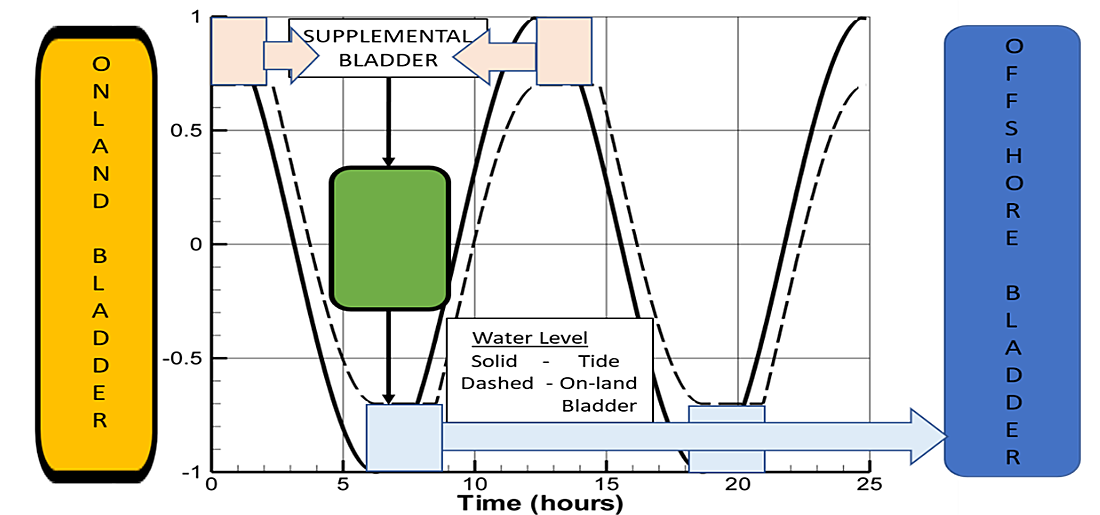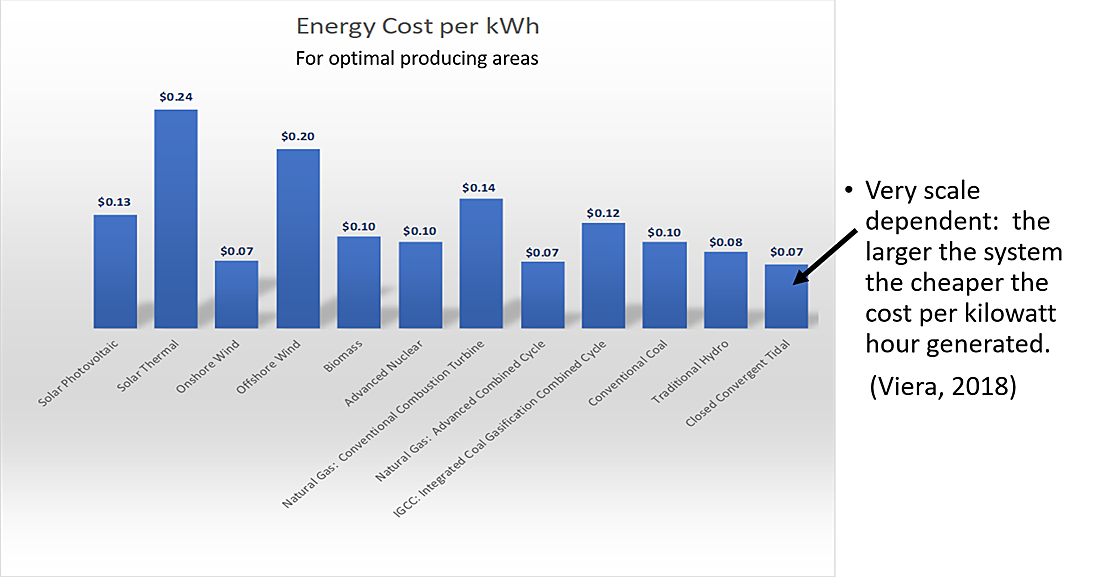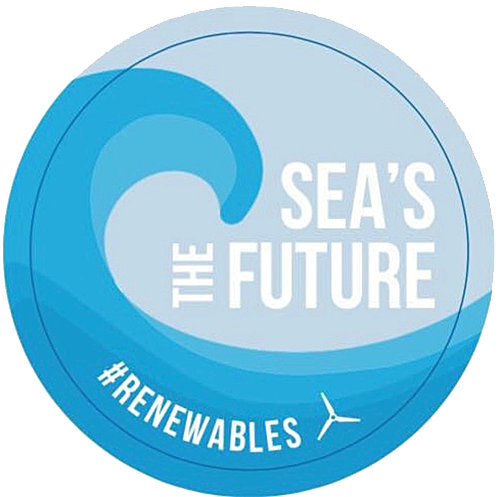Continuous Power For Low Tidal-Range Coasts With Little or No Harm to the Environment
The system uses a closed circulation between onshore and offshore bladders, combined with a specially designed nozzle system that accelerates the flow through the turbine, so that even with less than 3 feet of tide range, Megawatts of power can be generated. It uses a second onshore bladder positioned at an elevation that is utilized during intervals near low tide and high tide to compensate for the intervals of near zero head differential expected at those times.
The vertical and horizontal dimensions of the bladders can be scaled to produce a specific power production rate over the entire tidal cycle and to ensure continuity of power production. This capability could allow a 24-hour per day replacement of fossil fuel system along almost all U.S. coastlines and along many bays and rivers into which tides propagate.

![]()
How Is This Accomplished?
- A closed system is used to capture the pressure difference between onshore and offshore bladders - water inside system can be fresh to reduce corrosion and sterile to reduce biofueling with little or no harm to the environment
- A closed bladder functions like a "bellows." This collects the downward pressure gradient over a larger area than the open conduit.
- The "bellows" analogue is continued with a convergent section (nozzle) that acts to accelerate the flow by a factor equal to the ratio of the nozzle entrance area to the nozzle outflow area.
- An additional bladder can be used to maintain constant power generation.
- All bladders have an air layer to allow flow into bladders without encountering a stationary water mass that would retard the flow.
- All generators are on land for easy maintenance.

![]()
Cost Considerations
Given that all of this technology is new and different, it might still be difficult to justify for large-scale utilization if its cost per kilowatt is excessive. In a recent Master’s Thesis at the University of North Florida, Vieira (2018) provided an overall cost comparison for this new technology relative to that of existing fossil fuel and green energy technologies. The Table below contains the Levelized Cost of Energy, which includes consideration of:
- Measures lifetime costs divided by energy production
- Calculates present value of the total cost of building and operating a power plant over an assumed lifetime.
- Allows the comparison of different technologies (e.g., wind,solar, natural gas) of unequal life spans, project size, different capital cost, risk, return, and capacities.

Wind is not a good energy source in the summer for most mid-latitude areas (most of US) and discontinuous. Solar is discontinuous and difficult to scale to large systems – but extremely beneficial in individual buildings. Waves have yet to be effectively “tamed” but we are working on it!
![]()
The Future of Tidal Power Should

• Avoid blades encountering indigenous organisms
• Avoid biofueling
• Produce a continuous power supply
• Be scalable on a range from small communities around the world
• Function in more moderate tidal ranges than current systems
• Perform in an economically competitive context
• Be compatable with energy needs for large-scale desalinization
